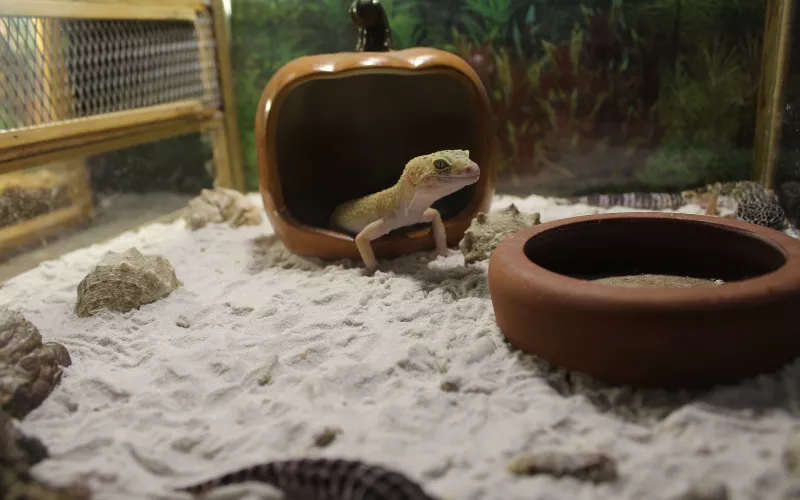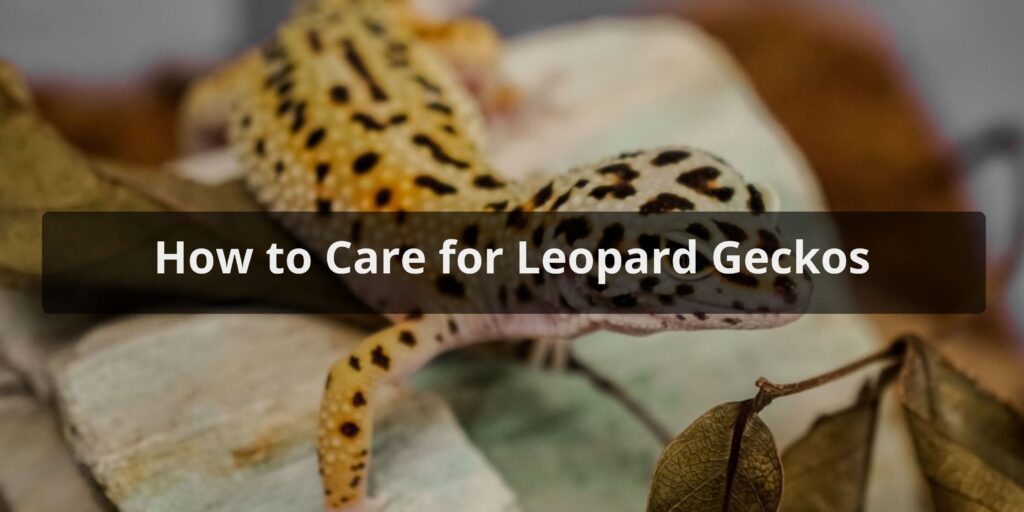Leopard geckos are becoming increasingly popular pets due to their docile nature, easy care requirements, and wide variety of morphs and colors available. How to care for leopard gecko? While leopard geckos are relatively easy to care for compared to other reptile pets, there are still some important factors to consider when bringing home and caring for these gentle lizards. With the right habitat setup, diet, and handling techniques, leopard geckos can live 10-20 years and make delightful pets.
Housing

An appropriate enclosure is one of the most important elements of leopard gecko care. These terrestrial lizards need an enclosure that is longer than it is tall, with plenty of floor space to move around and suitable substrates to burrow in. The minimum recommended size for one adult leopard gecko is a 20 gallon tank, but a 30-40 gallon tank allows even more room. The tank should have a screen lid for ventilation and UVB lighting.
Inside the tank, provide a substrate like reptile carpet or paper towels which are easy to clean. Avoid loose substrates like sand, which can cause impaction if accidentally ingested. Provide ample hiding spots like caves and logs, which help provide security and enrichment. Maintain a warm side around 90°F and a cooler side around 75-80°F using an under tank heating mat regulated by a thermostat. The temperature gradient allows self-regulation.
Humidity inside the tank should be kept low, around 30-40%, since leopard geckos are from arid regions. Use analog or digital hygrometers to monitor conditions. Low humidity helps with shedding. Provide a small dish of calcium-fortified powder to allow self-supplementation. Keep the habitat very clean by spot cleaning daily and full cleans weekly. Disinfect with a mild soap and water solution.
Diet
In captivity, leopard geckos do very well eating commercially available gut loaded insects. Crickets, mealworms, waxworms, and roaches are excellent feeders, offered 3-4 times weekly. Variety provides balanced nutrition. The insects should be gut loaded with nutritious foods to pass those nutrients along.
Juveniles should get fed daily, while most adults will eat every other day. Feed approximately 5 appropriately sized insects per feeding for juveniles, 3-4 for adults. Dust insects with calcium + D3 powder 2 feedings per week and a multivitamin 1 feeding per week. This provides balanced nutrients.
Remove uneaten insects within 24 hours and ensure fresh, clean water is available at all times in a shallow dish. Do not feed leopard geckos very small prey items like pinky mice, which provide little nutritional value. Obesity can become an issue if overfed. Adjust feeding amounts as needed to maintain a healthy weight.
Handling

Leopard geckos are usually quite docile and easily handled once accustomed to their owners, making them a good pet reptile for beginners. Allow 1-2 weeks after bringing home a new gecko before attempting handling to allow them to settle in. Then, gently scoop up beneath the belly to lift, supporting the whole body. Limit handling to 10-15 minutes 1-2 times per day.
Sit on the floor or over a bed or soft surface in case of falls. Avoid restraining and do not grab by the tail, which can detach. Wash hands before and after handling to prevent spreading germs. Handle gently but securely, and do not drop. Supervise closely when handling juveniles. Start hand feeding as positive reinforcement. With regular, gentle handling, leopard geckos usually become quite tame companions.
Conclusion
While easy to care for compared to other exotic pets, leopard geckos do have particular habitat, nutritional, and handling requirements. Providing an appropriate heated terrarium with hides, maintaining proper temperatures and humidity, feeding a varied gut loaded insect diet, and gentle handling allows leopard geckos to thrive. Their 10-20 year lifespan and generally docile nature makes them a delightful beginner pet reptile when their needs are met. Following these best practices for housing, diet, and handling lays the foundation for a healthy, happy gecko companion.
FAQs About How to Care for Leopard Gecko
How often should I feed my leopard gecko and what is their diet?
Leopard geckos are primarily insectivores. Feed juvenile geckos daily, while adults can be fed every other day. Offer a variety of live insects, such as crickets, mealworms, and dubia roaches, dusted with calcium and vitamin D3 supplements. Ensure the insects are appropriately sized, not wider than the gecko’s head.
What are the temperature and humidity requirements for leopard geckos?
Leopard geckos thrive in a temperature range of 88-92°F (31-33°C) on the warm side of their enclosure and around 70-75°F (21-24°C) on the cooler side. Nighttime temperatures can drop by a few degrees. Maintain a humidity level of 20-40%, but raise it to 60% during shedding. Use a heat mat or ceramic heat emitter to create a temperature gradient.
How do I handle and tame a leopard gecko?
To handle and tame a leopard gecko, start by offering your hand for them to walk onto voluntarily. Move slowly and avoid sudden movements. Be gentle and patient, allowing the gecko to get used to your presence. Handle them for short periods initially, gradually increasing the duration as they become more comfortable.
Are there common health issues I should watch out for?
Common health issues in leopard geckos include respiratory infections, metabolic bone disease (due to calcium deficiencies), and shedding problems. Watch for signs like labored breathing, lethargy, or retained shed skin. Regularly check for signs of impaction, which can result from ingesting substrate, by monitoring their stool.
What substrates are safe and suitable for a gecko’s enclosure?
Safe and suitable substrates for leopard geckos include reptile carpet, paper towels, or non-adhesive shelf liner. Avoid loose substrates like sand or gravel, which can lead to impaction if ingested. These safer options help maintain a clean and hygienic environment for your gecko.



